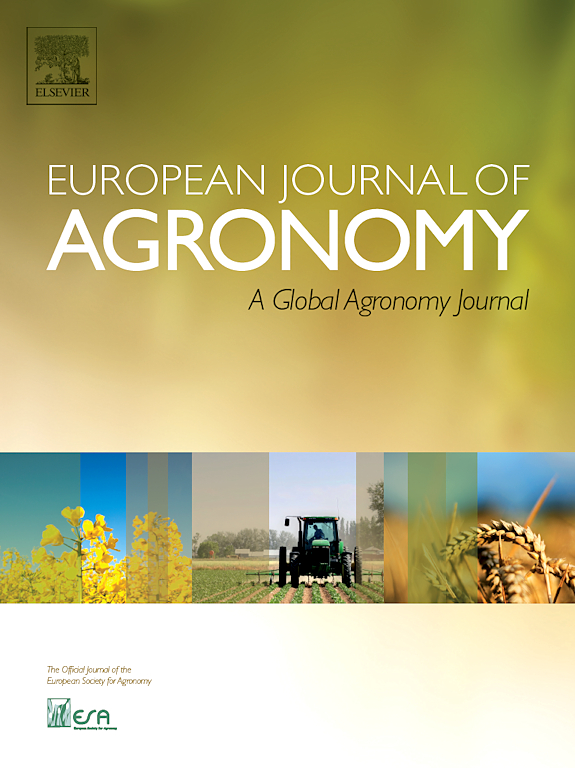Ver ítem
- xmlui.general.dspace_homeCentros Regionales y EEAsCentro Regional Buenos Aires SurEEA Hilario AscasubiArtículos científicosxmlui.ArtifactBrowser.ItemViewer.trail
- Inicio
- Centros Regionales y EEAs
- Centro Regional Buenos Aires Sur
- EEA Hilario Ascasubi
- Artículos científicos
- Ver ítem
Environmental and agronomic determinants of hairy vetch (Vicia villosa Roth) seed yield in rainfed temperate agroecosystems
Resumen
Vicia villosa Roth, commonly named hairy vetch (HV), is one of the most promising cover crop (CC) legumes, commonly included in strategies aimed at increasing agriculture sustainability. Due to the generally low yield, the availability of commercial seed is often limited. The objective of this study was to identify management and key weather factors governing the variation in HV seed yield. The study comprises a database of 96 fields dedicated to HV seed
[ver mas...]
Vicia villosa Roth, commonly named hairy vetch (HV), is one of the most promising cover crop (CC) legumes, commonly included in strategies aimed at increasing agriculture sustainability. Due to the generally low yield, the availability of commercial seed is often limited. The objective of this study was to identify management and key weather factors governing the variation in HV seed yield. The study comprises a database of 96 fields dedicated to HV seed production distributed in the Pampas region of Argentina, under a wide range of soil and weather conditions. Among the wide range studied, it was found that only poorly drained soils reduced HV seed yield. Crop protection practices, through the application of insecticide plus fungicide, and the axial threshing harvest system were the most important management tools determining high HV seed yield (> 600 kg ha−1). The inclusion of honey bees (HB) as pollinators did not significantly increase the seed yield, which might be due to alternative pollinator activity coming from neighbouring fields. A boundary function showed that an annual precipitation of 680 ± 243 mm and a sowing date during late autumn-early winter appeared to be sufficient to maximise seed yield under rainfed conditions. On the other hand, heat stress (>30 °C) during flowering and seed filling constrained the seed yield. A simplified crop model was developed to explain the effect of the most important factors on the seed yield. Crop management practices that increased the photosynthetic activity, such as foliar protection, were associated with increased seed yield.
[Cerrar]

Autor
Renzi Pugni, Juan Pablo;
Garayalde, Antonio Francisco;
Brus, Jan;
Pohankova, Tereza;
Smýkal, Petr;
Cantamutto, Miguel Angel;
Fuente
European Journal of Agronomy 147 : 126822 (July 2023)
Fecha
2023-07
Editorial
Elsevier
ISSN
1161-0301
1873-7331
1873-7331
Documentos Relacionados
Formato
pdf
Tipo de documento
artículo
Proyectos
(ver más)
INTA/2023-PD-L01-I100/2023-PD-L01-I100/AR./Genética en forrajeras para ambientes y mercados desafiantes
Palabras Claves
Derechos de acceso
Restringido
 Excepto donde se diga explicitamente, este item se publica bajo la siguiente descripción: Creative Commons Attribution-NonCommercial-ShareAlike 2.5 Unported (CC BY-NC-SA 2.5)
Excepto donde se diga explicitamente, este item se publica bajo la siguiente descripción: Creative Commons Attribution-NonCommercial-ShareAlike 2.5 Unported (CC BY-NC-SA 2.5)


